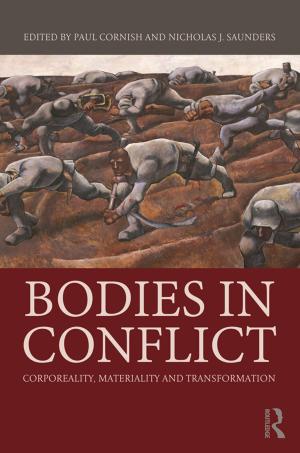The Anatomy of Fraud and Corruption
Organizational Causes and Remedies
Nonfiction, Reference & Language, Law, Corporate| Author: | Tomas Brytting, Richard Minogue, Veronica Morino | ISBN: | 9781317045090 |
| Publisher: | Taylor and Francis | Publication: | April 1, 2016 |
| Imprint: | Routledge | Language: | English |
| Author: | Tomas Brytting, Richard Minogue, Veronica Morino |
| ISBN: | 9781317045090 |
| Publisher: | Taylor and Francis |
| Publication: | April 1, 2016 |
| Imprint: | Routledge |
| Language: | English |
This ground-breaking book explores what happens when the fine line between competitive excellence and fraudulent and corrupt practice is crossed. Whilst most fraud literature focuses on the individual perpetrator, The Anatomy of Fraud and Corruption looks at how organizations as a whole and the people within it behave when fraud and corruption occur. By presenting a theoretical basis and a practical methodology for fraud risk awareness training, the book helps risk management professionals, and all those in critical corporate roles to redesign and train their organizations to strengthen their culture and become more resistant and resilient to the ever present threat of fraud and corruption. The Anatomy of Fraud and Corruption demonstrates that what we see as objective facts are not always what they seem. The qualified and uniquely experienced authors present a refreshing interpretation of Cressey's triangle of need, opportunity and rationalization. They employ a drama metaphor to reflect the interaction between fraudsters, victims and bystanders on the organizational stage. Corporate design, management and culture dictate what behaviour is normal or abnormal, whether it be manager and employee behaviour or their ability to become suspicious and question apparently improper actions. Using actual cases and investigations, the organizational conditions that give rise to fraud and corruption are explored. The authors then provide important insights as to how employees may be trained and motivated to reduce the likelihood and impact of fraudulent incidents. Whilst fundamentally a practical guide, this book is also essential reading for academics wanting to stay abreast of the latest developments in the study of ethics, organizational and work psychology and sociology, and criminology.
This ground-breaking book explores what happens when the fine line between competitive excellence and fraudulent and corrupt practice is crossed. Whilst most fraud literature focuses on the individual perpetrator, The Anatomy of Fraud and Corruption looks at how organizations as a whole and the people within it behave when fraud and corruption occur. By presenting a theoretical basis and a practical methodology for fraud risk awareness training, the book helps risk management professionals, and all those in critical corporate roles to redesign and train their organizations to strengthen their culture and become more resistant and resilient to the ever present threat of fraud and corruption. The Anatomy of Fraud and Corruption demonstrates that what we see as objective facts are not always what they seem. The qualified and uniquely experienced authors present a refreshing interpretation of Cressey's triangle of need, opportunity and rationalization. They employ a drama metaphor to reflect the interaction between fraudsters, victims and bystanders on the organizational stage. Corporate design, management and culture dictate what behaviour is normal or abnormal, whether it be manager and employee behaviour or their ability to become suspicious and question apparently improper actions. Using actual cases and investigations, the organizational conditions that give rise to fraud and corruption are explored. The authors then provide important insights as to how employees may be trained and motivated to reduce the likelihood and impact of fraudulent incidents. Whilst fundamentally a practical guide, this book is also essential reading for academics wanting to stay abreast of the latest developments in the study of ethics, organizational and work psychology and sociology, and criminology.















